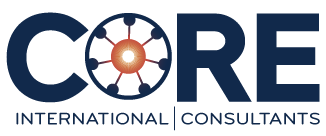Top three considerations for Boards about aligning your organization to deliver the strategy.
Are you on a Board? How certain are you that your CEO’s organizational design will deliver the strategy?
With strategy clearly outlined, resources well laid out, and a plan defined to show progress against goals, does your CEO have the people systems in place to make the desired results inevitable, by design?
What we know is that the usual answers from your CEO offered about this topic, with heartfelt conviction, have very low chances of success. This is based on our experience and confirmed by recent global research studies:
- Gut feel does not work. Instinct does not often go far enough to truly understand the active dynamics of complex adaptive human systems. Even if it worked in the past, you only have a fifty percent chance that it will work again.
- What others are doing is only nice to know, but not the answer. Bench-marking has limited assurance and usefulness. Now that you know what everyone else in your industry is doing to get organized and aligned around their strategy, will doing that in a similar way really give you the best way to go at it for your unique set of strengths and goals?
- Having good leaders is not good enough. Yes, good leaders will define and drive alignment to a system of management practices that enables their success. In fact, they will often want to do exactly what the CEO often does – use their gut feel, past experience, and bench-marking what others are doing. Without clear design and direction of how to drive that design and consensus among cascaded sets of leaders, your CEO may inadvertently be asking your top talent to all put their paddles in the water at different times and different ways. It takes a lot more energy to move ahead that way.
Three things you need to insist on to make sure that your organization is designed for success.
- Is your organizational design based on a soundly researched set of principles that drive performance and execution?
Get to know the latest and rigorously tested science – and make sure it is being used to design leveling, layering, grouping, collaboration, cascading, as well as mapping and matching talent.
- Is it fully and clearly written down?
Clear accountabilities for each role – especially the top three levels of management can create a cascade of accountabilities that drive performance management, as well as better assurance that you have people with the right capabilities in those roles. At a minimum you can find out the risk of delivery of strategy based on this type of alignment of roles and talent capability. Better yet, use a system that allows you to actively model and manage the accountabilities, reporting relationships and talent decisions simultaneously.
- Do your organizational design principles have a clear basis for not only organizing the work, but also managing talent, and managing the work itself?
Three-tier management practices (e.g. accountabilities between each of CEO, VPs, and Directors) that do this gets performance out of the matrix structure as well as builds cross-functional role clarity and builds trust through proactive communications up and down the organization. In a word, the message does not get lost through passing it down the line one layer at a time.
This clarity makes sure that all paddles are hitting the water in the same direction at the same time. That’s what executes and delivers on strategy. Know your organizational design risk.

